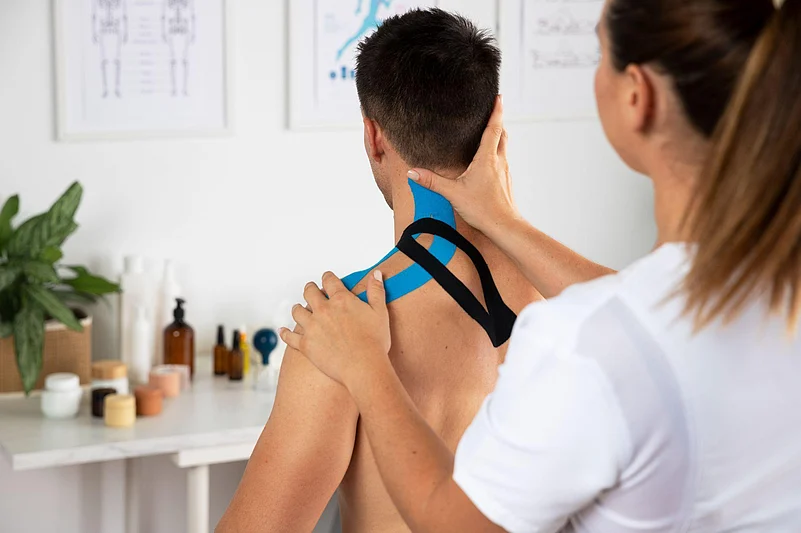You’ve probably seen athletes with bright-colored strips of tape on their shoulders, knees, or backs. These are called Kinesio tapes. They are stretchy, skin-like tapes used in sports therapy. But do they really work? Or is it just another fitness trend?
Let’s break it down simply.
What Is Kinesio Taping?
Kinesio taping is a therapy method where special elastic tape is applied to the skin. It was invented in the 1970s by Dr. Kenzo Kase, a Japanese chiropractor. The tape is designed to support muscles and joints without limiting movement.
It’s different from traditional athletic tape, which is stiff and restricts motion.
Claimed Benefits of Kinesio Tape
People use Kinesio tapes for several reasons:
To reduce pain
To improve blood and fluid flow
To support injured muscles or joints
To help with posture
To prevent injuries during activity
The tape lifts the skin slightly. This is said to create space under the skin and reduce pressure. Some say it improves circulation and speeds up healing.
Users of Kinesio Tape in Sports & Therapy
Kinesio tapes are popular with:
Athletes
Physiotherapists
Trainers
Runners
Gym-goers
Even people with chronic pain or joint problems use it for support.
You’ll see it on cricketers, footballers, tennis players—even Olympic athletes.
Is There Proof It Works?
This is where it gets tricky.
Some studies show that Kinesio tape may help with:
Mild pain relief
Short-term muscle support
Improved joint awareness (proprioception)
But many other studies say the effects are small or unclear. In fact, in 2013, a review published in the Sports Medicine journal found limited evidence that Kinesio tape was better than no treatment.
So, while some people feel better with it, scientists say it’s hard to prove if it’s the tape or just a placebo effect.
What is the Placebo Effect?
It means you feel better simply because you believe the treatment is working.
Even if the tape has no direct physical benefit, your brain might help reduce the pain just because you expect relief.
And that’s not necessarily a bad thing.
Expert Opinion on Kinesio Taping
Many physiotherapists believe kinesio taping can help as part of a larger treatment plan.
They use it with:
Exercise
Massage
Manual therapy
Rehab programs
It’s not magic on its own. But it may add value when used correctly.
Any Risks?
Very few. The tape is safe for most people. But some may experience:
Skin irritation or rashes
Allergic reactions (due to the adhesive)
Always do a patch test before using it fully.
Also, don’t rely only on taping if you have a serious injury. Always consult a doctor or trained therapist.
Do Indian Athletes Use It?
Yes. In India, many physiotherapists now offer taping therapy. Athletes from cricket, kabaddi, hockey, and athletics use Kinesio tape during training or competitions. With more awareness about sports science, its use is growing.
Even gym trainers in cities like Delhi, Mumbai, and Bengaluru are learning how to apply them.
Conclusion
Kinesio tapes might help with support, posture, or pain, but they are not a cure. If you think it helps you move better or feel stronger, that’s great.
But remember, tape alone cannot heal injuries.
It’s just one tool in the recovery box.
If used wisely along with exercise, rest, and expert guidance, it can be helpful. But don’t expect miracles.
Listen to your body. And when in doubt, talk to a professional.























